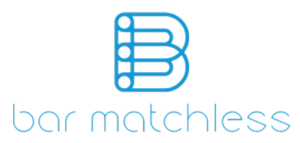Security roles are an essential part of Microsoft Dynamics 365. While their primary functionality is ensuring data security, they also affect licensing costs. Proper understanding of security roles is not only essential for reducing system vulnerabilities but can also make the software more cost-effective to use, as an accurate setup of security roles can significantly lower licensing costs. This article will introduce you to the concept of security roles and provide you with best practices for setting them up.
What Are Security Roles in Microsoft Dynamics 365?

Microsoft Dynamics 365 has introduced security roles to help organizations protect their data from intentional and unintentional breaches and minimize the risks of abusing the system functionality.
A security role can be understood as a level of system features available to a user with that role. This level is defined by privileges and access. In Microsoft Dynamics 365, privileges are individual actions that can be performed within the system. Creating, modifying, removing, and reviewing records is an example of a privilege.
An access level contains a group of such privileges and ranges from the No Access level, which literally does not allow a user to interact with the data contained in the system in any way, to the Global level, which gives a user the maximum freedom to work with all available system features. This highest level of access is usually earmarked for system administrators.
Security roles are assigned to a user or a team and grant them the permissions for interaction with the system defined in the role. Assigning security roles to teams is similar to the assignment process for individual users. Yet, in this case, all team members receive the same access level and privileges.
Note that Microsoft Dynamics 365 has higher precedence for greater privileges. Thus, if users receive an additional security role associated with a team that has a lower access level than the original security role, they will still have the privileges included in the higher access level.
Find Microsoft Dynamics 365 on: https://www.executiveautomats.com/d365-security-setup
Security Roles and Licensing Cost

While security roles can effectively hide data from users who do not need it to perform their work, roles also define the final licensing cost of Microsoft Dynamics 365.
The licensing system for this ERP and CRM suite calculates the cost for each user. This cost depends on the level of access, which makes the fees higher for users with more privileges than for those with minimal access to the system.
It is a flexible licensing option that allows organizations to avoid paying large upfront fees for all system functionality that may be redundant. At the same time, companies can change access levels and add and remove users on the go. This feature also contributes to the system’s scalability.
Best Practices for Setting Security Roles

Security roles are a powerful feature of Microsoft Dynamics 365 that can provide system and data security as well as optimize licensing costs. However, the security role configuration process can be challenging, especially when companies need to make quick decisions.
One of the most common mistakes companies tend to make under time pressure is overprovisioning privileges or even granting maximum access. Even if an employee has no malicious intent, they may fall victim to a social engineering or hacking attack, or simply be careless when it comes to protecting their credentials and devices used for logging into the system. To avoid such situations, it is highly recommended to grant the minimum privileges necessary for performing job functions whenever possible.
It is also crucial to regularly review and update security roles, as changes within an organization can affect the access requirements for its employees. It is undeniably important to restrict access to sensitive data such as personal information or records related to finances.
Organizations can choose from predefined security roles, but it is also possible to customize them and create new roles.
In addition, companies can protect their business processes and data by separating tasks and distributing them between employees to prevent one employee from gaining too much access and control.
Since the correct choice of security roles may require substantial time and effort, companies can automate the process with a dedicated solution offered by Executive Automats. The Security Roles Setup tool can scan the system and suggest the most relevant security roles based on actual business processes.







